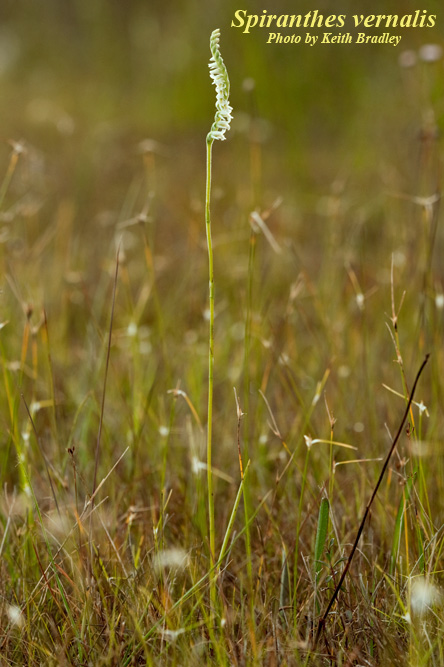Difference between revisions of "Spiranthes vernalis"
(→Ecology) |
|||
| Line 36: | Line 36: | ||
<!--===Seed bank and germination===--> | <!--===Seed bank and germination===--> | ||
<!--===Fire ecology===--> <!--Fire tolerance, fire dependence, adaptive fire responses--> | <!--===Fire ecology===--> <!--Fire tolerance, fire dependence, adaptive fire responses--> | ||
| − | <!--===Pollination | + | <!--===Pollination and use by animals===--> |
| − | |||
<!--===Diseases and parasites===--> | <!--===Diseases and parasites===--> | ||
Revision as of 10:30, 18 June 2021
| Spiranthes vernalis | |
|---|---|

| |
| Photo by Keith Bradley, Atlas of Florida Vascular Plants | |
| Scientific classification | |
| Kingdom: | Plantae |
| Division: | Magnoliophyta – Flowering plants |
| Class: | Liliopsida – Monocotyledons |
| Order: | Orchidales |
| Family: | Orchidaceae |
| Genus: | Spiranthes |
| Species: | S. vernalis |
| Binomial name | |
| Spiranthes vernalis Engelm. & A. Gray | |

| |
| Natural range of Spiranthes vernalis from USDA NRCS Plants Database. | |
Common name: Spring lady's tresses
Contents
Taxonomic notes
Synonym: Ibidium vernale (Engelmann & A. Gray) House
Description
A description of Spiranthes vernalis is provided in The Flora of North America.
Distribution
Ecology
Habitat
In the Coastal Plain, S. vernalis can be found with Polygala cymosa and Lachnanthes.[1]
Phenology
S. vernalis has been observed flowering April through June with peak inflorescence in May and fruiting May through June.[1][2]
Conservation, cultivation, and restoration
Cultural use
Photo Gallery
References and notes
- ↑ 1.0 1.1 Florida State University Robert K. Godfrey Herbarium database. URL: http://herbarium.bio.fsu.edu. Last accessed: July 2015. Collectors: Robert K. Godfrey, Sidney McDaniel, Jean W. Wooten, Loran C. Anderson, Steve L. Orzell, E. L. Bridges, R. Kral, William Lindsey, P. L. Redfearn, Jr., Lovette E. Williams, Karen MacClendon, John B. Nelson, R. Komarek, Wilson Baker. States and Counties: Florida: Baker, Calhoun, Clay, Columbia, Dixie, Escambia, Franklin, Gadsden, Gulf, Hamilton, Holmes, Leon, Nassau, Pasco, Polk, Santa Rosa, St. Johns, Taylor, Wakulla, Walton. Georgia: Grady. South Carolina: Richland. Compiled by Tall Timbers Research Station and Land Conservancy.
- ↑ Nelson, G. PanFlora: Plant data for the eastern United States with emphasis on the Southeastern Coastal Plains, Florida, and the Florida Panhandle. www.gilnelson.com/PanFlora/ Accessed: 14 DEC 2016